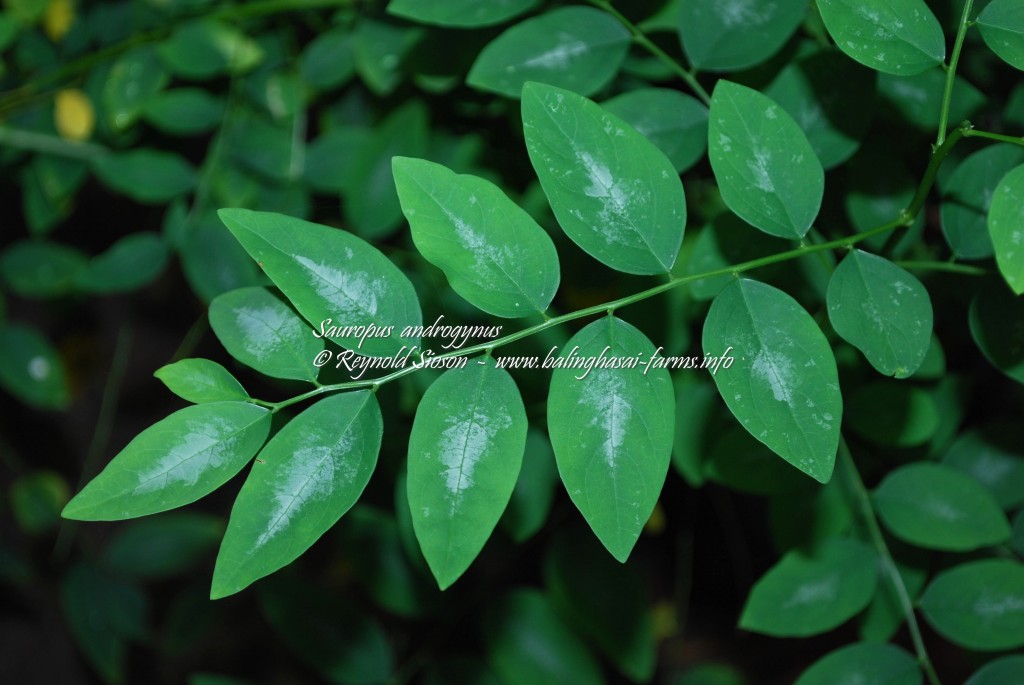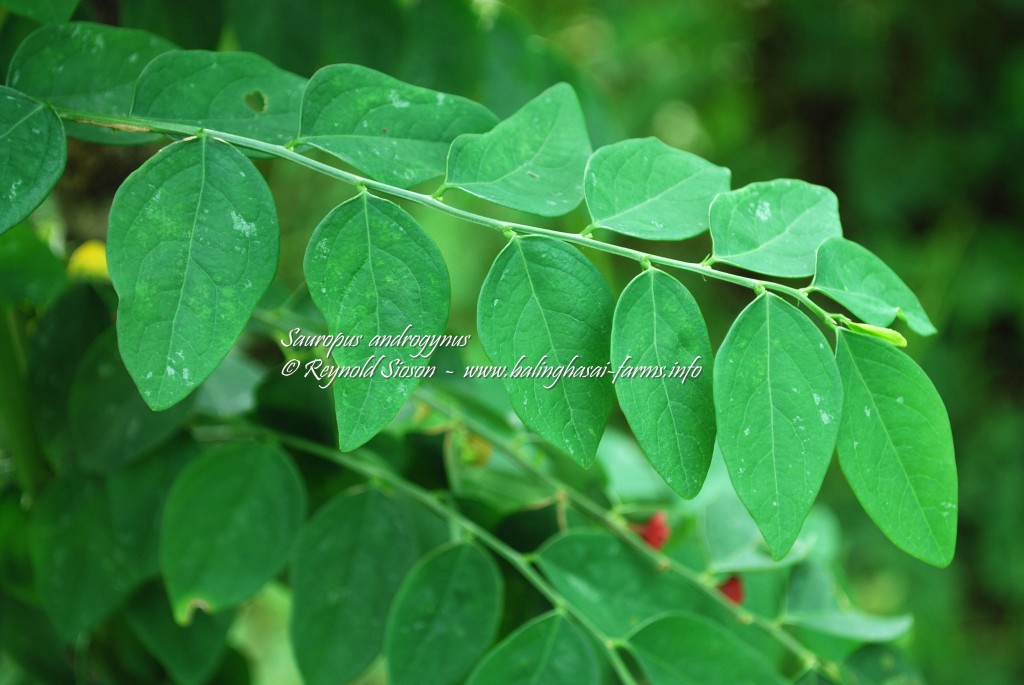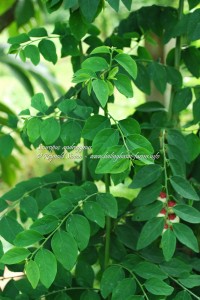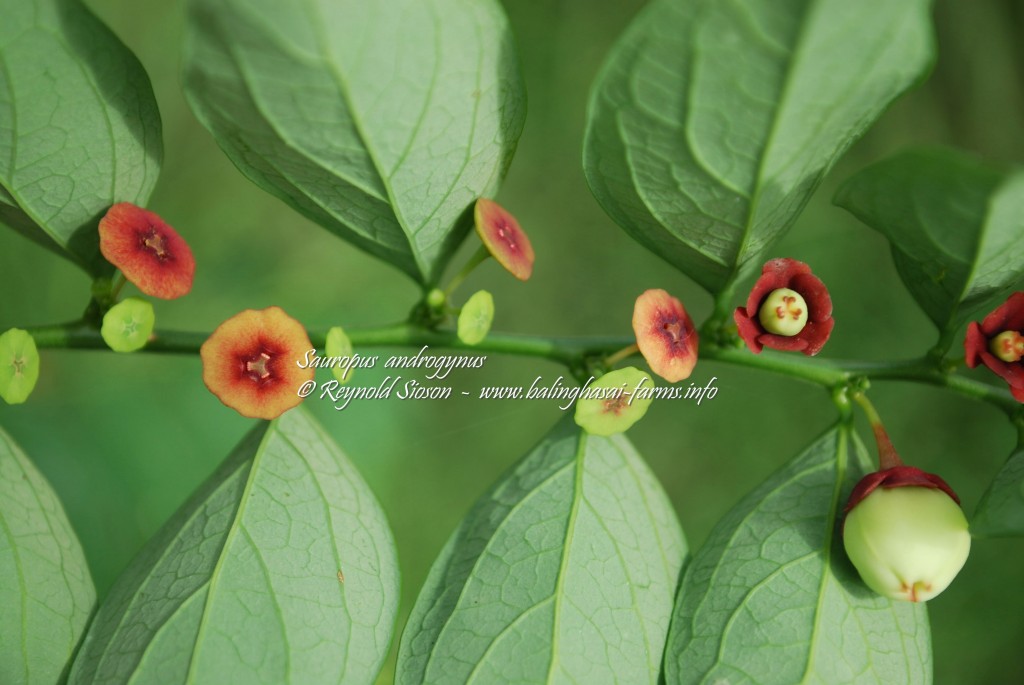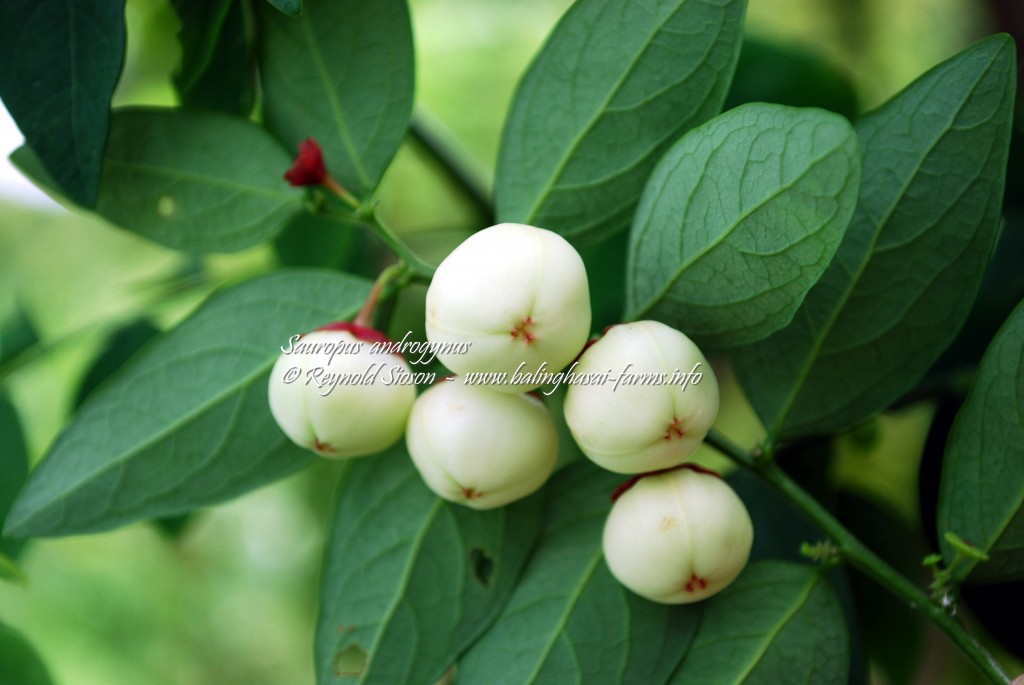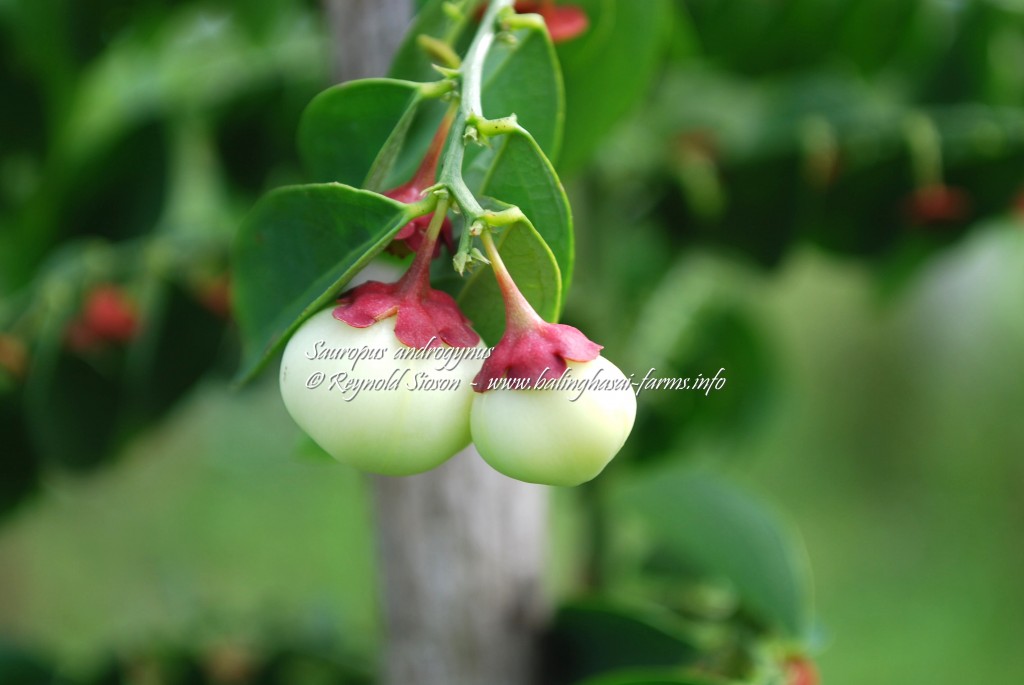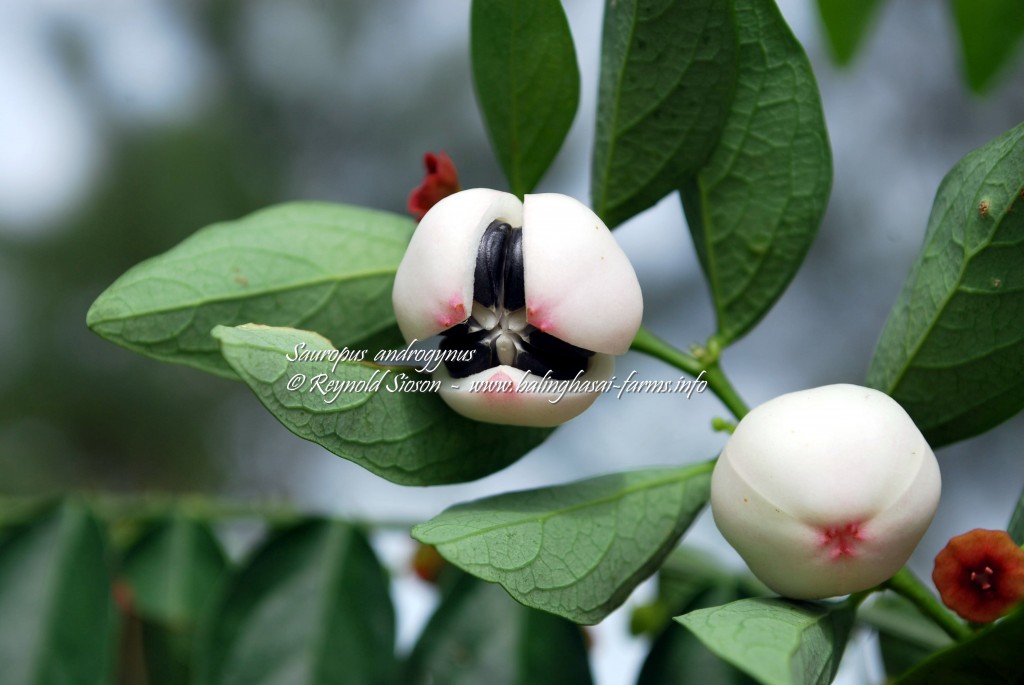Specimen : Cultivated
Local name : Binahian, Chinese malunggay
Trade name : Star gooseberry, Sweet leaf
Botanical name : Sauropus androgynus
Family : Phyllanthaceae
Specimen height : up to 2 meters
Fruiting season : wet season
Traits : Fast growing; Semi-deciduous; Shade tolerant; Shrub; Willowy
Used for : Leaves are cooked and eaten as vegetable or used as fodder for cattles; Traditional medicine
Recommendations : Backyards; Edible gardening; Farms; Hedge; Home gardens; Livestock fodder; Medicinal plant; Potted; Wildcrafting
Native range : India, Sri Lanka, Bangladesh, China, Southeast Asia (including the Philippines)
National conservation status : Not threatened
(Note : Over-consumption may lead to irreversible injury of the lungs)
Further readings :
EcoCrop - Sauropus androgynus http://ecocrop.fao.org/ecocrop/srv/en/cropView?id=9593
South China Botanical Garden Checklist - Sauropus androgynus http://www.efloras.org/florataxon.aspx?flora_id=610&taxon_id=200012609 (244)
